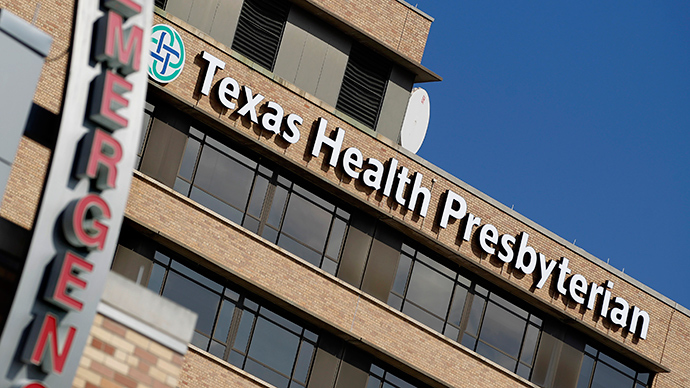
A new report by the U.S. Centers for Disease Control and Prevention (CDC) provides additional details about the “Ebola cluster” in Dallas County, Texas, that left one man dead, two nurses infected, and an entire nation on edge.
CDC officials interviewed nearly 150 healthcare workers in Dallas while trying to learn how the disease spread from the first patient, Thomas Eric Duncan, to two of the nurses providing care for him at Texas Health Presbyterian Hospital. Their findings, published in Morbidity and Mortality Weekly, shed new light on how the hospital handled the case and what U.S. hospitals need to do to better prepare for future cases.
Among the new details revealed is that 12 people who had contact with at least one of the Dallas Ebola patients were tested for the virus during their 21-day monitoring periods, because these 12 individuals developed a fever or other symptoms potentially consistent with the disease. However, none of these people were found to have Ebola.
In the report, CDC researchers along with colleagues from Dallas County Health and Human Services, the Epidemic Intelligence Service and the Texas Department of State Health Services provide a detailed timeline of what happened, starting with Thomas Eric Duncan’s arrival in Dallas from Liberia on Sept. 20.
After becoming ill with a fever and abdominal pain, Duncan sought care in the emergency department of Texas Health Presbyterian Hospital on Sept. 25, but his symptoms were misdiagnosed as sinusitis and he was sent home with antibiotics. He returned to the hospital three days later, on Sept. 28, at which point he tested positive for the virus and was admitted to an isolation unit for treatment. Despite intensive efforts to save his life, Duncan died Oct. 8.
Health officials originally identified 48 people in Dallas who had contact with Duncan, including 17 people in the community, 10 people who rode in the same ambulance as Duncan before it was disinfected, and 21 health care workers who did not wear adequate personal protective equipment (PPE) during their initial contact with Duncan on Sept. 25.
But after two nurses — Nina Pham and Amber Vinson — tested positive for Ebola, the number of people monitored was expanded to include 147 health care workers who had contact with Duncan, even if they were wearing PPE. Pham and Vinson did use PPE in their care of Duncan, the report said, and it remains unclear exactly how and when they were exposed to the deadly virus. By last Friday (Nov. 7), all contacts had cleared the 21-day monitoring period and the county’s outbreak was declared over.
“The Dallas Ebola cluster highlights many important issues that might be encountered by other jurisdictions in which an Ebola diagnosis is made locally,” the researchers said. These include the need to identify Ebola patients when they first show up at a hospital or emergency department, and the need to develop protocols to safely transport suspected Ebola patients to the hospital, the researchers said.
Since the Dallas cases, a doctor in New York who had treated Ebola patients in Guinea tested positive for Ebola. Health officials in New York had the benefit of learning from the Dallas experience, Gov. Andrew Cuomo said at a news conference in October, at the time the case was announced. Because the doctor, Craig Spencer, notified officials before he went to the hospital, a specially trained team of health care workers was able to transport him while they wore proper PPE. On Tuesday (Nov.11), Spencer was declared free of the virus and released from the hospital.
